Erik Tungate is Expanding Oak Park using a Proactive Approach
The City of Oak Park has evolved tremendously since City Manager, Erik Tungate, took office in 2012. “The City government operation has been fully modernized, and there is a new spirit among our residents and business owners. There is also a greater awareness for the role our community plays in the greater Metropolitan Detroit area,” Tungate explained. Much of this is due to his view that “You can’t cut your way out of a bad situation. You have to grow your way out,” a quote referenced in last year’s State of the City Address. Tungate is a proponent of sustainable growth.
Tungate explained, “For a city that is almost entirely built-out like Oak Park here in the inner ring suburbs of 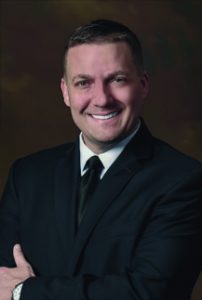 a major city like Detroit, there are only so many ways you can find new sources of revenue and maintain vibrancy. In local government, we have to make sure we are as fiscally responsible with our taxpayer’s hard-earned tax dollars as possible while staying focused on investing in quality of life amenities, attracting new development, and seeking strategic partnerships in our region in addition to finding cost savings. There is no question a proactive approach like this has proven to be more successful than simply cutting city expenditures and expecting the market to come to us.”
a major city like Detroit, there are only so many ways you can find new sources of revenue and maintain vibrancy. In local government, we have to make sure we are as fiscally responsible with our taxpayer’s hard-earned tax dollars as possible while staying focused on investing in quality of life amenities, attracting new development, and seeking strategic partnerships in our region in addition to finding cost savings. There is no question a proactive approach like this has proven to be more successful than simply cutting city expenditures and expecting the market to come to us.”
The theme of Oak Park’s 2017 State of the City Address was “Bridging the Past, Present and Future.” Tungate offered some insight. “At the address, we unveiled our bridge overpass project on the overpass at I-696 and Coolidge. We wanted to tie in all of the things we’ve been doing with that, since it is an infrastructure that most people in the State of Michigan will know us by once it’s installed.” He said over the course of the next year and looking even further ahead, “I want the City of Oak Park to be able to maintain its fiscally sound financial practices, and I would like to see us moving in the direction of even more walkability.”
Tungate is hopeful that the 2018 State of the City Address will bring even more exciting news. “We may be able to unveil some great new projects during our 2018 State of the City Address. In any event, when these projects are ready for prime time, we will be releasing information to promote the positive impact they will have on our growing community. I can safely say we are actively pursuing multiple mixed-use developments. In fact, this is one of our prime goals for 2018.”
As far as other goals for the city, “We are pursuing new housing developments through our economic development arm as well as investing in our infrastructure to build the kind of quality of life amenities that attract new residents from other areas. While it may seem counter-intuitive given how communities have dealt with attracting new development and residents in the past, we strongly believe that our investments will pay off versus the traditional mindset of giving tax incentives only,” Tungate explained. “This is a fairly new approach for Oak Park and there is no doubt we’ve seen this approach work in communities like Detroit, Ferndale, and Birmingham, who have invested heavily in creating one-of-a-kind places where people want to live and work.”
Tungate said his favorite thing about Oak Park, in general, is its residents and business owners. “I’ve worked in many other communities throughout my career and there is no question we have one of the most supportive groups of residents and business owners anywhere. Whether it’s Public Safety or economic development, they are always there for us and ready to provide a helping hand. It’s amazing to witness each and every instance. When you combine that with the amazing and talented team we have at the City, it is something truly special.”
Tungate said residents should know, “We are ready to lead and are not waiting for things to happen to us. Rather, we are shaping the future for ourselves and making things happen. Our city government is setting new standards and aggressively pursuing excellence in every way.”

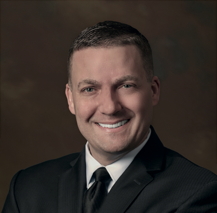
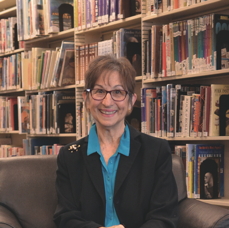
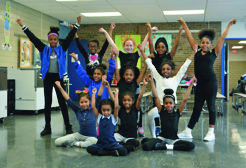
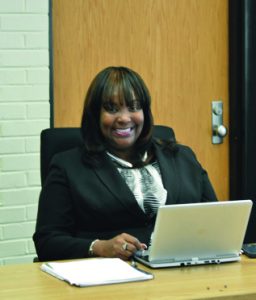 for students of all ages. Oak Park schools truly provide a great educational experience for students with various abilities. The goal is for all students to reach their full potential. We are closing the opportunity gap. We are working daily to increase student achievement while providing exposure and opportunity that removes barriers that hinder success. Oak Park schools has a caring and committed workforce, as well as very dedicated employee partners. We also have a very supportive resident and business community.
for students of all ages. Oak Park schools truly provide a great educational experience for students with various abilities. The goal is for all students to reach their full potential. We are closing the opportunity gap. We are working daily to increase student achievement while providing exposure and opportunity that removes barriers that hinder success. Oak Park schools has a caring and committed workforce, as well as very dedicated employee partners. We also have a very supportive resident and business community. InsideOut is Detroit’s largest literary arts non-profit and Oak Park Schools has had the honor of working with the non-profit for four consecutive years. Since 1995, InsideOut has helped more than 50,000 Detroit youth express themselves through the written word. The InsideOut Poetry Gala featured OPPA students reciting their work, and staff sharing some of their favorite selections from the book.
InsideOut is Detroit’s largest literary arts non-profit and Oak Park Schools has had the honor of working with the non-profit for four consecutive years. Since 1995, InsideOut has helped more than 50,000 Detroit youth express themselves through the written word. The InsideOut Poetry Gala featured OPPA students reciting their work, and staff sharing some of their favorite selections from the book.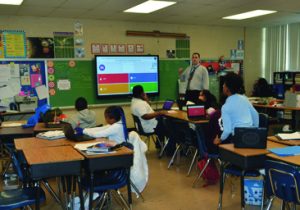 their classrooms fully equipped with 21st Century learning tools when they return on Tuesday, August 29, 2018. Interactive projection screens called Promethean Boards, and laptop carts will be available. These tools are designed to keep students engaged while enhancing their technology skills and overall learning environments.
their classrooms fully equipped with 21st Century learning tools when they return on Tuesday, August 29, 2018. Interactive projection screens called Promethean Boards, and laptop carts will be available. These tools are designed to keep students engaged while enhancing their technology skills and overall learning environments.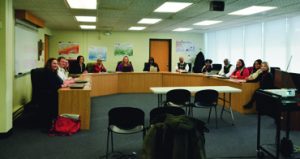 Oak Park Schools, a school-of-choice district, has more than 5,000 students. Oak Park is a school-of-choice district. Students must be a resident of Oakland, Macomb, or Wayne Counties, between the grades of Pre-K-12, to attend.
Oak Park Schools, a school-of-choice district, has more than 5,000 students. Oak Park is a school-of-choice district. Students must be a resident of Oakland, Macomb, or Wayne Counties, between the grades of Pre-K-12, to attend.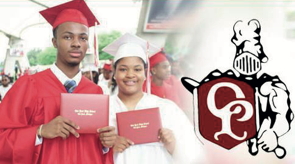
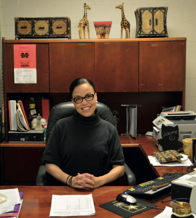 recognized as a model . Only approximately 200 schools nationwide and in Canada receive this honor. “PLCs are schools and districts in which educators recognize the key to improved learning for students is on-going, job-embedded learning for the adults who serve those students,” Jones explained. Educators focus on learning, build a collaborative culture, and create a results orientation.
recognized as a model . Only approximately 200 schools nationwide and in Canada receive this honor. “PLCs are schools and districts in which educators recognize the key to improved learning for students is on-going, job-embedded learning for the adults who serve those students,” Jones explained. Educators focus on learning, build a collaborative culture, and create a results orientation.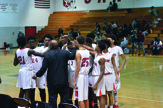 Champions. Coach Greg Carter and the athletic staff led the students to victory.
Champions. Coach Greg Carter and the athletic staff led the students to victory.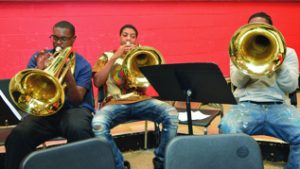 competition on September 23, 2017, claiming victory over marching bands from six schools in the State of Michigan. The Marching Legion swept all six major categories, winning first place trophies in Overall Auxiliary, Overall Drum Major, Overall Drumline, Overall Music, Class A Band, and Overall Grand Champions. “The band’s motto is ‘Enthusiasm is the Key.’ When we are performing, we must always be enthusiastic about it. We believe that by embracing our motto we are able to offer performances everyone can enjoy and appreciate wholeheartedly,” said Mr. Virgil Goodwine, Band Director of the Marching Legion.
competition on September 23, 2017, claiming victory over marching bands from six schools in the State of Michigan. The Marching Legion swept all six major categories, winning first place trophies in Overall Auxiliary, Overall Drum Major, Overall Drumline, Overall Music, Class A Band, and Overall Grand Champions. “The band’s motto is ‘Enthusiasm is the Key.’ When we are performing, we must always be enthusiastic about it. We believe that by embracing our motto we are able to offer performances everyone can enjoy and appreciate wholeheartedly,” said Mr. Virgil Goodwine, Band Director of the Marching Legion.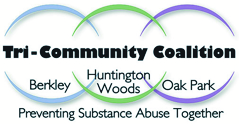 organization (Y.O.U.) sponsor; and teacher leader, was presented with the prestigious ‘Power of One’ Award at the Tri-Community Coalition’s 19th annual Leadership Breakfast held on December 8, 2017.
organization (Y.O.U.) sponsor; and teacher leader, was presented with the prestigious ‘Power of One’ Award at the Tri-Community Coalition’s 19th annual Leadership Breakfast held on December 8, 2017.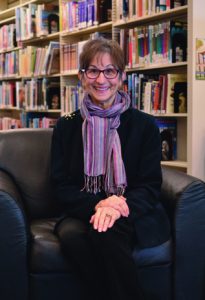
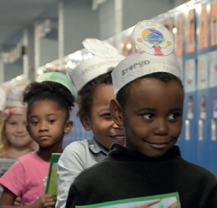
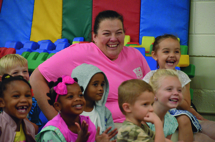 explained Berkley Schools Communications Director Jessica Stilger. She added, “Its middle school, which includes grades 6 through 8, combines Oak Park residents with those from Huntington Woods. This school is very diverse in its student body socio-economically, racially, and religiously. The school is a current International Baccalaureate school.”
explained Berkley Schools Communications Director Jessica Stilger. She added, “Its middle school, which includes grades 6 through 8, combines Oak Park residents with those from Huntington Woods. This school is very diverse in its student body socio-economically, racially, and religiously. The school is a current International Baccalaureate school.”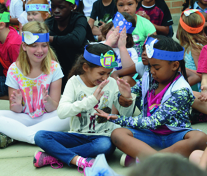 six-weeks-old through age five. The two centers collectively have infant, toddler and preschool classrooms that run both school-year and year-round schedules. The center houses state and federally funded preschool classrooms, including Great Start Readiness Program (GSRP) and Head Start. Enrollment for Building Blocks is not limited to Berkley School District boundaries. In Fall 2018, the two buildings will combine into one childcare center at Avery, after extensive work completes over the summer due to a 2015 Bond passage,” Stilger said.
six-weeks-old through age five. The two centers collectively have infant, toddler and preschool classrooms that run both school-year and year-round schedules. The center houses state and federally funded preschool classrooms, including Great Start Readiness Program (GSRP) and Head Start. Enrollment for Building Blocks is not limited to Berkley School District boundaries. In Fall 2018, the two buildings will combine into one childcare center at Avery, after extensive work completes over the summer due to a 2015 Bond passage,” Stilger said.
 “Ferndale offers a hometown, small school atmosphere that gives parents, students, and teachers, and community an opportunity to really get to know one another,” Good said. “The district is large enough to provide a wide range of curricular and extra-curricular offerings, but small enough to maximize student participation and maintain a community feel.”
“Ferndale offers a hometown, small school atmosphere that gives parents, students, and teachers, and community an opportunity to really get to know one another,” Good said. “The district is large enough to provide a wide range of curricular and extra-curricular offerings, but small enough to maximize student participation and maintain a community feel.” Pitts-Reed qualified for the state championship wrestling meet. Student athletes Jacob Keener and John Stellard were selected from a pool of more than 4,200 nominees to be among 16 finalists awarded the Michigan High School Athletic Association Scholar Athlete (MHSAA) award. Students continue to excel at sports, academics, and extra-curriculars each school year.
Pitts-Reed qualified for the state championship wrestling meet. Student athletes Jacob Keener and John Stellard were selected from a pool of more than 4,200 nominees to be among 16 finalists awarded the Michigan High School Athletic Association Scholar Athlete (MHSAA) award. Students continue to excel at sports, academics, and extra-curriculars each school year.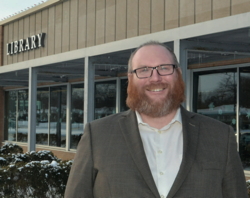
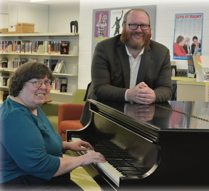 and Director Brandon Bowman has been crucial in navigating the transition since his start in 2014.
and Director Brandon Bowman has been crucial in navigating the transition since his start in 2014.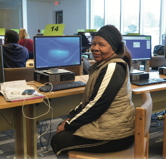 available to patrons. “When people don’t have access to the Internet or the fast speeds of access that we have, they come up here and use our computers. We just added ten new computers last year to meet that need, so that’s huge for us,” Bowman explains.
available to patrons. “When people don’t have access to the Internet or the fast speeds of access that we have, they come up here and use our computers. We just added ten new computers last year to meet that need, so that’s huge for us,” Bowman explains.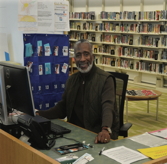 team on hand or that they use a ton of tax dollars for their growth. In reality the majority of their effort is accomplished with a small but dedicated staff, grant applications and the Friends of the Oak Park Library (see next page), a nonprofit organization that offers funds through volunteer efforts.
team on hand or that they use a ton of tax dollars for their growth. In reality the majority of their effort is accomplished with a small but dedicated staff, grant applications and the Friends of the Oak Park Library (see next page), a nonprofit organization that offers funds through volunteer efforts.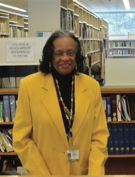 Library of Michigan that taught us to go out and ask the questions, obtain input and better meet the needs of our community,” Bowman says. “That’s what we want to do over the next couple years; we want to fine-tune our model of getting the input back to us, and fine-tune our communication out to the community.”
Library of Michigan that taught us to go out and ask the questions, obtain input and better meet the needs of our community,” Bowman says. “That’s what we want to do over the next couple years; we want to fine-tune our model of getting the input back to us, and fine-tune our communication out to the community.”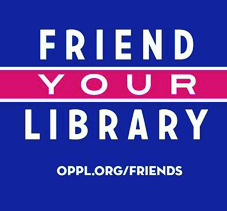
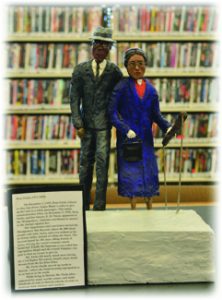 early 1950s, the Oak Park Library was run out of a bookmobile, and the Friends raised over $24,000 by requesting supplies, furniture and funds door-to-door in Oak Park neighborhoods. As a result, the Library opened the doors to their building at 14300 Oak Park Blvd in 1958, and are still located there. The Friends continue to help with renovations too, supporting remodels in 1968 and 2011.
early 1950s, the Oak Park Library was run out of a bookmobile, and the Friends raised over $24,000 by requesting supplies, furniture and funds door-to-door in Oak Park neighborhoods. As a result, the Library opened the doors to their building at 14300 Oak Park Blvd in 1958, and are still located there. The Friends continue to help with renovations too, supporting remodels in 1968 and 2011.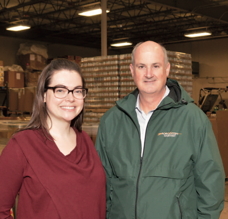
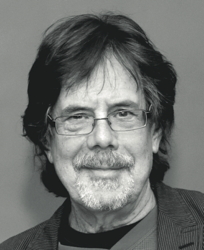
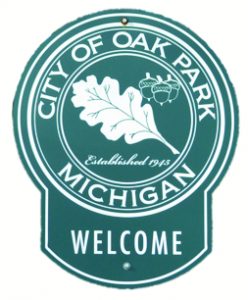 United Nations, a miniature replica of the actual session occurring simultaneously at the UN headquarters in New York City. The flags of the many nations were flown, and students would be chosen to represent ambassadors from the world’s different countries, sometimes even donning the garb of their nation of origin.
United Nations, a miniature replica of the actual session occurring simultaneously at the UN headquarters in New York City. The flags of the many nations were flown, and students would be chosen to represent ambassadors from the world’s different countries, sometimes even donning the garb of their nation of origin.